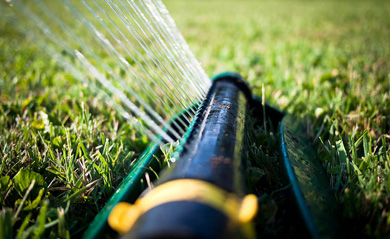What Kind of Lawn Mower Do I Need?
Spring is finally
here, and if you are a homeowner or if landscaping is not covered in your
rental agreement, it’s about that time to get a lawn mower so you can keep your
yard looking great. You’ll find that there are many different options available
for lawn mowers, but also a number of factors to consider so that you obtain
the perfect mower for your particular needs.
If you have a large, sprawling lawn, you may want to
consider a riding lawn mower (like that shown above). If you have
a large yard, but have several flowerbeds, decorations, swing sets, or other
obstacles, you need to make sure you have the maneuvering room that most riding
mowers require. Another important issue
to consider with riding mowers is whether there are any steep hills in your
yard. Due to their size, there is a
danger of the mower tipping over if the grade is too steep.
Also keep in mind differences in terminology. A riding lawn mower and a tractor are two
different machines. Mowers are smaller,
with the deck for the blades in the front.
Tractors typically have decks in the middle, and most have the ability
to pull other tools. These are often
used on farms and for tilling, whereas a lawn mower is the better choice for an
average yard due to its maneuverability.

If you have a small
yard, around half an acre or less, a push mower (example to the right) may be your best choice. These
are “walk behind” mowers that are either self-propelled or moved by physically
pushing it. If you have a relatively
flat lawn, the self-propelled version can help you get the work done without
the struggle, and many have adjustable speeds for your comfort. Or you can get the classic reel mower of the
past. These have no engine, are better
for the environment, and they often cut the grass closer to the ground.
Once you have determined what size mower you need, you then
need to decide whether you want an electric or gasoline powered engine. Electric mowers are quiet, but require a
battery or cord. If you have a large
lawn, an electric mower may not be feasible.
Lawn mowers truly are a necessity, and if you take the time
to assess your needs you will have no problem choosing the right mower for you
so you can keep your lawn looking great all season.
-- Philip
Photo credits: http://www.flickr.com/photos/jjay69/5331098217/
http://www.flickr.com/photos/meaduva/1178786504/
 Watering your lawn or garden can be time consuming and expensive, especially in very dry years. So how can you get the most out of the water you use to water your lawn?
Watering your lawn or garden can be time consuming and expensive, especially in very dry years. So how can you get the most out of the water you use to water your lawn?
